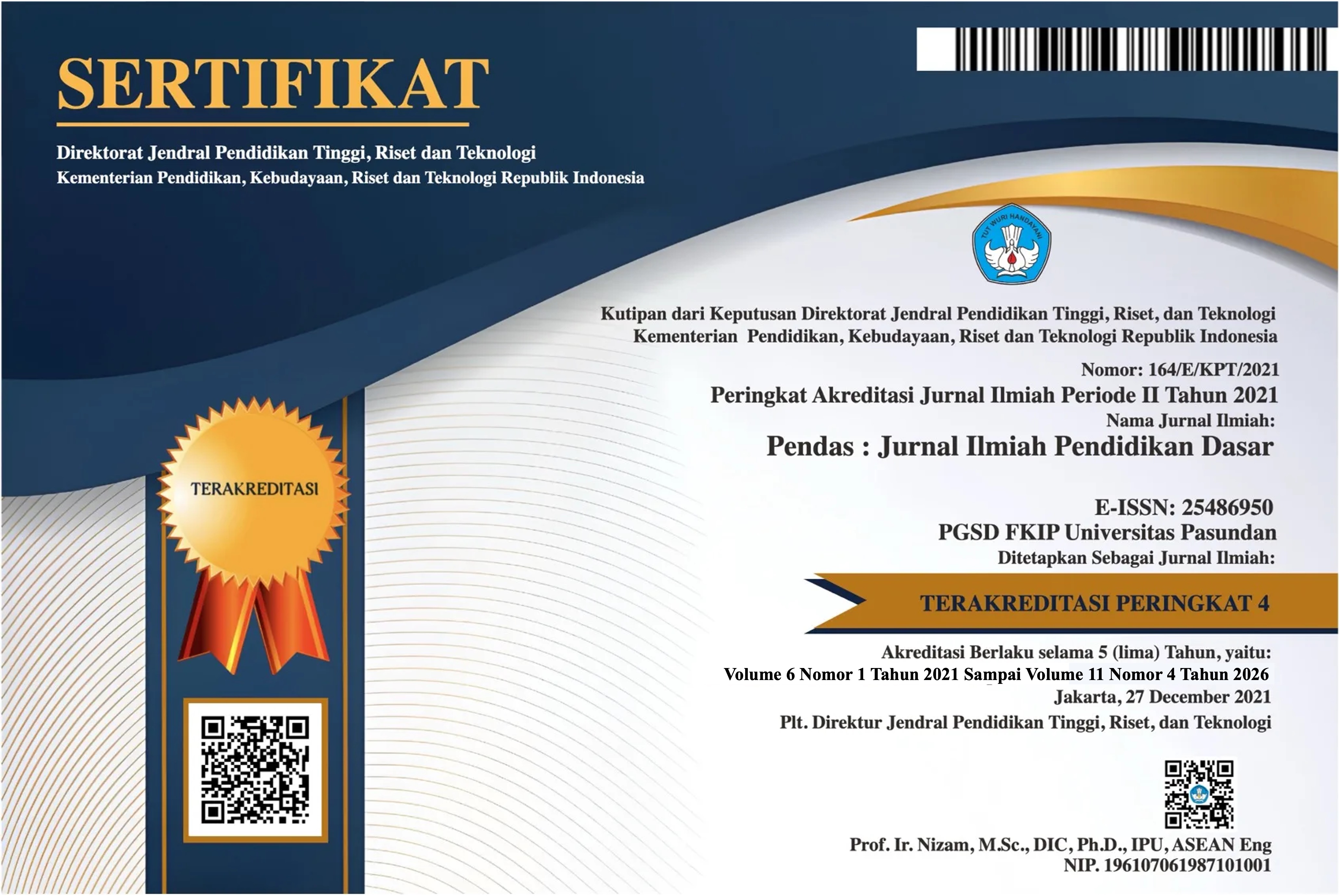PERSEPSI PERSEPSI MAHASISWA PGSD TERHADAP PERKULIAHAN ONLINE DI MASA PANDEMIK COVID-19
PERSEPSI MAHASISWA PGSD TERHADAP PERKULIAHAN ONLINE DI MASA PANDEMIK COVID-19
DOI:
https://doi.org/10.23969/jp.v6i1.3980Keywords:
Persepsi, Perkuliahan Online, Pandemi Covid-19Abstract
ABSTRACT
Online learning is a learning system established along the pandemic covid-19 era. This study is aimed at describing students’ perceptions on online learning along covid-19 period. The data was gathered thought the levering questionnaire and interview process. The sample covered 76 students of PGSD study programs STKIP Soe. The result showed that 64% students supported the use online learning science increases students competence in using technology, materials can be accessed easily, anytime, anywhere, the materials are easy to understand and decrease expenses on transportation. There were 68,5% students said that there were hindrances’ related to the system that covered look of internet access, and look of the facilities there were 54% student shared their expectation to have online learning system in the next semester and also face to face learning system especially for math programs strengthen their understanding on the materials. The learning process should also be delivered by implementation of interesting creative and innovative method to create conducive and comfortable learning process.
Keywords: Perception, Online Learning, Pandemic Covid-19
ABSTRAK
Perkuliahan online merupakan salah satu kebijakan yang diterapkan dimasa pandemic covid-19. Tujuan penelitian ini adalah untuk mendeskripsikan persepsi mahasiswa mengenai perkuliahan online di masa pandemic covid-19. Data penelitian dikumpulkan melalui kuesioner dan wawancara. Sampel dari penelitian adalah mahasiswa PGSD STKIP Soe sebanyak 76 orang. Hasil penelitian menunjukkan bahwa sebanyak 64% mahasiswa menyatakan adanya kelebihan dalam perkuliahan online yakni peningkatan kemampuan mahasiswa dalam penggunaan teknologi, pembelajaran dapat diakses kapan saja dan dimana saja, materi yang disampaikan dapat dipahami dan adanya pengurangan biaya transportasi ke kampus. Sebanyak 68,5% menyatakan bahwa hambatan perkuliahan online meliputi kurangnya ketersediaan kuota internet, koneksi internet yang tidak stabil, dan sarana prasarana yang kurang, Sebanyak 54%
mahasiswa sangat berharap proses perkuliahan di semester berikut tetap dilakukan perkuliahan online dan perlu diadakanya perkuliahan tatap muka untuk matakuliah matematika agar mahasiswa bisa lebih memahami materinya. Pembelajaran yang dirancang pun juga dapat menggunakan metode yang lebih kreatif dan inovatif sehingga menciptakan suasana pembelajaran yang menyenangkan bagi mahasiswa.
Kata Kunci: Persepsi, Perkuliahan Online, Pandemi Covid-19
Downloads
References
Davis, H., & Fill, K. (2007). Embedding blended learning in a university’s teaching culture: Experiences and reflections. British Journal of Educational Technology
, 38 (5).
Fajrian, H.(2020,maret 15).
RetrievedApril 8, 2020,from https://katadata.co.id/berita/2020/0 3/15/antisipasi-corona-nadiem- makarim-dukung-kebijakan- meliburkan-sekolah
Hameed, S., Badii, A., & Cullen, A. (2008). Effective E-Learning Integration with Traditional Learning in a Blended Learning Environment. European and Mediterranean Conference on Information Systems .
La Ode Anhusadar, KINDERGARTEN: Journal of Islamic Early Childhood Education
Lashley, Y. G. (2014). Integrating computer technology in the teaching of Biology. International Journal Of Biology Education , 3(2).
Mustaji, Karwanto, Dewi, U., & Khotimah, N. (2014). Pemberdayaan Mahasiswa Untuk Berpikir Kritis, Kreatif, Dan Kolaboratif Melalui Pengembangan Perangkat Pembelajaran Kolaborasi. . Fakultas Ilmu Pendidikan,Universitas Negeri Surabaya .
Nailul Mona. (2020). Konsep Isolasi Dalam Jaringan Sosial Untuk Meminimalisasi Efek Contagious ( Kasus Penyebaran Virus Corona Di Indonesia ) Jurnal Sosial Humaniora Terapan., 2(2), 117–
Nugroho. (2012). Profesionalisme Guru SD Negeri Se-Kecamatan Warungasem Kabupaten Batang. Suatu tinjauan aspek persepsi guru tentang kepemimpinan kepala sekolah dan motivasi berprestasi guru. Varidika , 135-146.
Oh, E., & Park, S. (2009). How are universities involved in blended instruction? Educational Technology & Society , 12 (3).
Picciano, A. G. (2006). Blended Learning Implication for growth and access. Journal of asynchronous learning networks , 10 (3).
Rovai, A., & Jordan, H. (2004). Blended Learning and Sense of Community: A comparative analysis with traditional and fully online graduate courses.
International Review of Research in Open and Distance Learning , 5(2).
Singh, G., ’donoghue, J. O., & Worton, H. (2005). A Study Into The Effects Of eLearning On Higher Education. Journal of University Teaching & Learning Practice , 2(1).
Saifuddin, M. F. (2016). E-Learning Dalam Persepsi Mahasiswa. Universitas Ahmad Dahlan , 102- 110.
S.Alam, & L.Jackson. (2013). A Case Study : Are Traditional Face-To- Face Lectures Still Relevant When Teaching Engineering Courses ? vol. 3, no. 4, pp. 9–16.
Zimmerman, B. (2000). Attaining selfregulation: A social cognitive perspective. In M. Boekarts,
P. R. Pintrich, & M. Zeidner (Eds.), Handbook of selfregulation (pp. 13- 39). San Diego, CA: Academic Press.
Zimmerman, B., & Martinez-Pons, M. (1988). Construct validation of a strategy model of student selfregulated learning. Journal of Educational Psychology , Vol. 80, 284- 290.



















